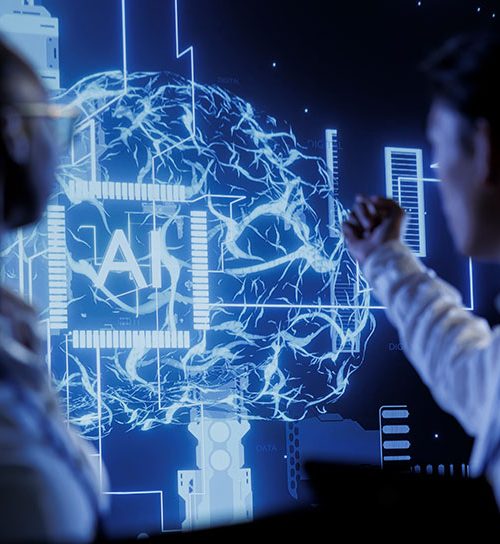L&D Teams’ Top 8 Priorities for 2024 in the AI Era

As we stand at the tail-end of 2023 (hard to believe, right?), it is evident that the L&D landscape is poised to undergo significant transformations. Over the next 12 months, there are likely to be multitude of innovative changes taking the spotlight.
The coming year will usher in a dynamic adventure for L&D folks that includes leveraging state-of-the-art AI-driven technologies and reimagining conventional learning methodologies. The need of the hour is a proactive approach that can help tackle challenges and seize opportunities that the future of work presents.
In this blog we will look at 8 key aspects that will feature at the top of the priority list for L&D leaders in 2024.
1. Upskilling and Reskilling
The current global workforce is foreseeing a seminal skills gap, with the majority of workers anticipated to need new skills by 2027. To address this, L&D leaders must give precedence to upskilling and reskilling strategies that are pivotal in not only attracting but also retaining top talent.
In 2024, internal upskilling will continue to remain a more cost-effective approach for organizations to bridge skill gaps. A traditional one-size-fits-all approach will no longer work and it will all be about customized learning paths and content that align with individual learning styles, while ensuring scalability.
As skills evolve rapidly in traditional and emerging roles, the demand for proactive and innovative skill-building and talent management will remain crucial.
2. Leveraging AI in Learning
As per a PwC survey, 34% employees believe the adoption of AI in the workplace will be essential to empower them to acquire new skills for the evolving professional landscape. Employee skilling and AI go hand-in-hand today which means it will be imperative to integrate AI-powered learning in most L&D efforts.
Instead of the conventional top-down model of learning, the focus will have to be on personalizing training content, automating processes, and continually assessing learners with feedback throughout courses via robust AI-driven solutions.
The solution will lie in empowering employees by utilizing robust solutions like AI-powered Learning Experience Platforms (LXPs) that identify role-specific skills, conduct thorough assessments based on global standards, and tailor personalized learning plans. As employees progress, the system adapts, providing a customized and adaptive learning journey.
Besides, GenAI too will continue to be a focal point, bolstering L&D’s efforts. Solutions like AI-driven Just-in-Time Learning can be leveraged to offer immediate access to curated resources for efficiently tackling unexpected challenges. Those like AI-based Proctoring can ensure integrity of assessments by addressing irregularities like mobile use and unauthorized individuals. AI-enhanced Assessments can elevate evaluations, offering automated grading and adaptive testing for quicker, more precise results. Talent acquisition too can be streamlined using AI to generate instant, customized JDs, SOPs, and competency skillsets, simplifying role definition and saving valuable time.
3. Learning in the Flow of Work
Traditionally, workforce training involved taking individuals away from their desks and office spaces. However, since the past few years, the concept of learning in the flow of work has gained more momentum. In 2024, this paradigm of learning is set to undergo a transformative evolution, driven by technology.
Intelligent learning systems fueled by AI will actively identify learning moments and provide targeted, just-in-time content to address specific challenges or opportunities while employees are at work. They no longer have to find special time away from the work to undergo training.
On-demand microlearning modules (more on this in the next point) will deliver quick and digestible bursts of information, enabling employees to efficiently acquire knowledge without disrupting their workflow. Immersive technologies like AR and VR will assume a more prominent role in crafting realistic and context-rich learning experiences seamlessly integrated into the flow of work.
4. Microlearning
While microlearning has been in existence for a couple of decades, its popularity has surged in recent years as our understanding of human learning has deepened. Research shows that microlearning improves long-term knowledge retention by up to 80% and engagement by 50%.
At its core, microlearning involves breaking down substantial pieces of information into smaller, more easily digestible segments. By concentrating on essential information delivered in brief bursts, microlearning prevents cognitive overload.
In the coming year, microlearning will continue to play an important role, not only economizing time for both learners and instructors but also enhancing knowledge retention and comprehension. It will work the best for professionals, aligning with their busy schedules, offering short bursts of information that can be easily integrated into their routine.
5. Gamification
Gamification is known to introduce a fun approach to learning. Employing gaming elements like competitive leaderboards, rewards, and interactive play can improve learner participation, as organizations strive to enhance engagement and motivation in their training content.
In the coming year, this approach will especially be beneficial for accommodating diverse learning styles in the workplace, acknowledging that not everyone learns in the same manner. Moreover, the focus will be on empowering learners with an enriched learning experience by providing them interactive challenges and missions. Traditional and boring learning methods will take a backseat through an interactive learning environment that encourages active participation.
6. Data-Driven Insights
Gamification is known to introduce a fun approach to learning. Employing gaming elements like competitive leaderboards, rewards, and interactive play can improve learner participation, as organizations strive to enhance engagement and motivation in their training content.
In the coming year, this approach will be especially be beneficial for accommodating diverse learning styles in the workplace, acknowledging that not everyone learns in the same manner. Moreover, the focus will be on empowering learners with an enriched learning experience by providing them interactive challenges and missions. Traditional and boring learning methods will take a backseat through an interactive learning environment that encourages active participation.
7. Strategic Learning Experiences
In 2024, L&D approach will have to focus their efforts on becoming a strategic learning partner that facilitates seamless knowledge transfer and practical learning applications.
This means offering learning experiences with cutting-edge technology like leveraging blockchain for secure credential management, introducing advanced AI coaches for personalized guidance, and implementing AI-powered learning analytics ecosystems for in-depth insights into individual and cohort performance.
The integration of these features can create a dynamic learning experience, enhancing engagement and facilitating effective learning.
8. Ethical Considerations for AI
As AI continues to evolve, it will be important for L&D teams and organizations in general to prioritize ethical considerations and privacy safeguards while incorporating it into their learning. L&D teams will have to work in tandem with security teams on strategies to uphold transparency and build trust with end-users.
Ensuring adherence to ethical standards and privacy safeguards in learning initiatives will remain paramount. Implementing data minimization, anonymization and aggregation practices and collection of only essential information will remain crucial to prioritize user privacy protection. Robust data security measures, including encryption and access controls, will have to be in place to prevent unauthorized access.
Additionally, maintaining legal compliance with relevant data protection laws like GDPR and ISO 27001 will be imperative. Regular reviews and updates to these practices will be integral to staying aligned with evolving ethical standards and meeting user expectations.
In Conclusion
All in all, 2024 is going to be an exciting year for L&D and HR folks! Organizations that invest in forward-thinking AI-driven learning initiatives will be better positioned for success in an increasingly complex business environment.











